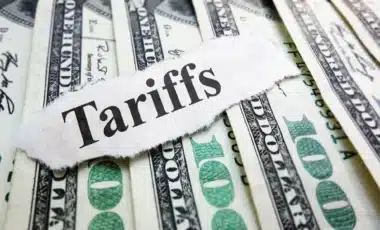In February, the combination of wet weather and persistent cost of living challenges significantly dampened retail sales, leading to a meagre growth rate of just 1%. Many households opted to save money by staying indoors.
Trends and Challenges in UK Retail Sales as Non-Food Sales Decline and Consumers Exercise Caution
According to the latest retail sales monitor from the British Retail Consortium (BRC) and advisory firm KPMG, non-food item sales plummeted by 2.5% in the three months leading up to February. This decline, encompassing furniture, household appliances, footwear, and clothing, reflects weakening consumer confidence
Food sales increased by 6%, a slower rate compared to the 6.3% registered in the previous month, due to a decrease in inflation. While shoppers maintained stable grocery supplies, they exercised caution in other spending areas, reflecting ongoing challenges such as high borrowing costs and energy bills.
The combination of edible and non-edible items resulted in a total retail sales increase of 1.1% in February, marking a decrease from the growth rates of 1.2% in January and 1.7% in December.
Beauty and health products, toys, and home accessories such as cooking utensils and cushions provided a glimmer of hope for families seeking entertainment at home. Despite being above-average earners, many families are grappling with high costs, including rising interest rates, affecting areas such as car finance, mortgages, and other forms of borrowing.
Heavy rains in the south of England last February prompted many households to turn to fast-food, takeaways, and streaming services, as indicated by separate data from Barclays. Subscriptions and digital content experienced an 11.8% surge in spending since August 2021, partly driven by the popularity of new series and the weather.
Conversely, spending at restaurants contracted by 13.4%, accelerating from the pace observed in January. Meanwhile, spending growth at bars, clubs, and pubs reached its lowest volume since September 2022.
Karen Johnson, the head of retail at Barclays, emphasized: “February’s wet weather meant Britons chose to spend more time indoors, resulting in a slowdown in high street and hospitality spending. This shift in behaviour meant ‘insperiences’ enjoyed a boost, as consumers opted to enjoy cosy nights in with a TV show and a takeaway.”
Challenges Persist in UK Retail and Hospitality Amid Economic Pressures
The slowdown in consumer spending has significantly impacted hospitality businesses, which are already grappling with high energy bills, surging employee wages, and ongoing food price inflation. Data from CGA and AlixPartners reveals that these challenges have resulted in the closure of 3,000 licensed premises.
Main hospitality groups, including nightclubs, restaurants, and hotels, saw minimal growth of 0.1% in the preceding month, despite rising prices.
Helen Dickinson, the chief executive of the BRC, which represents most big retailers, emphasized the considerable impact of February’s heavy rains on sales growth: “Not even Valentine’s Day lifted customers out of the gloom, and gifting products that typically sell well, like jewellery and watches, failed to deliver.
The declining retail figures exacerbate the challenges faced by struggling fashion brands such as Boohoo, Superdry, and Asos, as well as household goods professionals like John Lewis and Currys.
Online clothing professionals are facing significant challenges as shoppers increasingly prefer physical stores for their non-essential shopping, despite adverse weather conditions.
The proportion of non-food items purchased online dropped to 35.7% in February, down from 36.1% the preceding year, as shoppers prioritize saving on delivery and return costs.
Linda Ellett, the UK head of retail markets at the advisory firm KPMG, emphasized that cuts in national insurance rates introduced last January, intended to increase people’s spending power, have not translated into increased spending on the high street.
“As many households continue to adapt budgets to meet higher essential costs, including higher mortgage rates, consumer reluctance to get out there and start spending is likely to remain in the short term,” she remarked.









